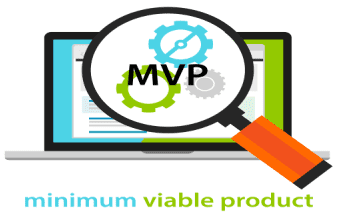Convertible Notes and Startup Funding
April 3, 2025
 Convertible Notes and Startup Funding
Convertible Notes and Startup Funding
Startup firms usually receive their funding in the form of debt or equity. Some newer ways of providing funding to the startups, which are different from both debt and equity, are still being explored. However, there are many creative ways of funding startups within the debt-equity realm as well. One of these ways is called…
 Cash Burn Rate: The Basics
Cash Burn Rate: The Basics
The startup and entrepreneurship game has undergone a lot of changes in the recent past. Earlier, having a free cash flow was the hallmark of a successful business. All businesses including startup businesses were valued on the basis of the profitability or the free cash flow which they generate. To date, most startup valuation models…
 The Co-Working Business Model – How Co-Working Spaces Make Money
The Co-Working Business Model – How Co-Working Spaces Make Money
The sharing economy has been one of the major themes when it comes to start-up investing in the past decade. Investors and entrepreneurs have woken up to the idea that resources can be utilized in a much more optimal manner if they are shared between various people. The mega-success of the co-working business model is…
We have already learned about the technique of proof of concept in the previous article. However, proof of concept isn’t the only technique that is used by entrepreneurs. There are other techniques that are frequently used as well. Minimum viable product is one of those techniques which is widely used by several entrepreneurs. In this article, we will closely examine the minimum viable product technique as well as the various benefits that it offers.
The concept of a minimum viable product is closely related to proof of concept. However, it is still significantly different. A minimum viable product is a particular version of the product which has maximum utility for the end consumers.
Hence, in order to undertake a minimum viable product exercise, an entrepreneur has to create various versions of their product. They can vary the availability of different features in different products. The end result is to find the specific combination of features that provides the maximum utility to the end consumer per unit of cost.
The objective of the minimum viable product is to reduce the wastage of expenses. Sometimes, entrepreneurs and startups spend a lot of time and money in building features that provide very little utility to the end consumer. The objective of the exercise is to find out the minimum combination of features that must be present in a product for it to be considered viable.
It is important to note that the minimum viable product is different from proof of concept because a tangible product already exists in this case. Also, such a product is available to a wider audience even though it may not be sold commercially. Obtaining the correct combination of features in the minimum viable product is often an iterative process. Entrepreneurs keep repeating this process till they achieve the desired outcome.
As mentioned above, the minimum viable product is often an iterative process. This means that the expenses involved in the process can be much larger than the proof of concept. However, entrepreneurs are still willing to undertake this process because of the following benefits that it offers:

The minimum viable product validates much more than technical capability. It validates the design of the product and the fact that it has a certain degree of market demand at a certain price point.
The minimum viable product approach has one major disadvantage. Companies are often not able to find the correct focus group of customers which represent the target market. Even if customers are randomly chosen, there is a good chance that there may be some form of selection bias which may end up skewing the results of the exercise. This selection bias can cost the money a lot of companies and even some lost reputation.
The company may end up incurring expenses to develop a product that may not even represent the mass market. Hence, it can be said that the end result of the minimum viable product is only as good as the sample selection.
Also, the minimum viable product is not able to replicate the subtle effects which products such as branding and packaging which can have a significant impact on sales and consumer preferences in the open market.
The minimum viable product is generally done after the proof of concept. It is done to finalize the specs of the product after the technology to create the different variations of the product has been validated at the proof-of-concept stage. In short, this is a technique that requires a significant amount of effort as well as expenses upfront but helps in avoiding significant problems down the road.
Your email address will not be published. Required fields are marked *